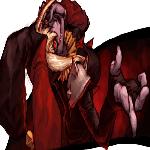
   

|
>>
|
|
|
| Estimated Combo Cost: $5.24 |
| Date Posted: Tue Dec/11/12 at 7:46 am |
|

|
|
|

|
|
|
|
| Date Posted: Tue Dec/11/12 at 1:10pm |
|

|
|
|

|
|
|
|
| Date Posted: Tue Dec/11/12 at 4:01pm |
|

|
|
|

|
|
|
|
| Date Posted: Tue Dec/11/12 at 7:12pm |
|

|
|
|

|
|
|
|
| Date Posted: Tue Dec/11/12 at 9:16pm |
|

|
|
|

|
|
|
|
| Date Posted: Thu Dec/13/12 at 8:50am |
|

|
|
|

|
|
|
|
| Date Posted: Thu Dec/13/12 at 8:19pm |
|

|
|
|

|
|
|
|
| Date Posted: Fri Dec/14/12 at 11:43am |
|

|
|
|

|

|
M-alice |
Posts: 46
Joined: 06-Apr-12 |
|
|

|
|
|
|
|
| Date Posted: Fri Dec/14/12 at 1:54pm |
|

|
|
|

|
|
|
|
|